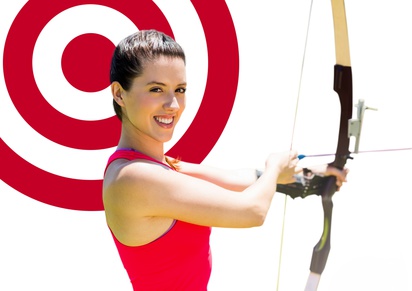Featuring TED-like Talks at Conferences and Workshops: What’s the Time Commitment?
- Would you like your Keynote Speakers to do more than stand at a podium with their notes and read their prepared speeches? (perhaps even prepared by someone else?)
- Would you prefer your speaker to share personal experience and examples – to speak from the heart?
- Do you want high energy at the opening of your Workshop or Conference, with a kick off that is dynamic, and thought provoking?
If you said yes to these questions, and almost everyone does, then thinking carefully about the format of your conference or workshops’s high profile sessions can lead you into thinking about non-traditional inputs such as Pecha Kuchas, Ignites, and TED-like Talks.
I frequently recommend these formats to groups I work with, and people generally like the idea of this, but don’t always have the experience with the preparation stage. They often ask, “How much time will this take to prepare?” Watching a smooth, tight, powerful TED-Talk makes it look easy. However, compared to a traditional presentation that has a bullet-by-bullet PPT presentation to guide it or a paper to read – a podium to stand behind, and a luxurious 30 minute time slot, these talks take more time commitment, for what’s ultimately a shorter input.
As Henry David Thoreau said in 1857: Not that the story need be long, but it will take a long while to make it short.
Ideally, you want your high profile speakers to take this time and create a great quality input in such prime real-estate in your conference programme as an opening session, or another key moment. You might want to video this input so that you can re-use it – put it on your website, include it as a part of the materials that come out of the event, or show it again on the screen in related events. So making the time investment in getting a polished Talk can be worth it.
We have written quite a bit on this blog about Pecha Kuchas and Ignites, so let me focus on the steps and timing we use to coach speakers towards using the TED-like format for their talks, and draw on our experience planning and hosting of numerous TEDx Events. There are lots of good blog posts about how to do TED-Talks, and TED’s Chris Anderson wrote a whole book on that this year if you want to go deeper into their process: The Official TED Guide to Public Speaking.
This is just a short indicative idea of the steps and the timing we use for the speaker and for the coach to support her/him in developing a TED-like Talk:
What’s the Idea?
- For this first step, you, the event organizer, probably have the idea and have chosen a speaker who you want to deliver it. Try to put the idea down in a sentence. Try a number of attempts. (30 min)
- Talk to the speaker and get their commitment to using this approach and explain that it will take them more time than writing their speech on the plane and handing you a USB stick before they walk on stage. (see arguments above). (10 – 30 min)
- Schedule an initial call with host, speaker and coach to discuss how to approach and frame their “idea worth spreading”. Establish a timeframe for working on it, and agree on the length of the talk. (Note the 18 minute limit, and the fact that the talk should only be as long as needed to make the point, so less time is also fine). The coach will give some ideas on the call about how to approach the idea. (30 mins to 1 hour call)
- The speaker should watch a number of TED Talks for storytelling tips – they can watch for example pick some from the playlist of The Most Popular TED Talks of All Time. (1 hour+)
Write it down
- The speaker will write an initial draft as they would speak it. If they don’t feel ready to write it out verbatim, they can put down bullet points first for feedback, then write down the whole thing as they would speak it afterwards. (1-3 hours)
- If the speaker has initial thoughts on images these can be put into the draft script. (30 min)
- Send the draft script to the coach (and the host if they want to be involved in the process). The coach reads through the draft and makes comments on structure, storytelling approach, etc. and sends it back. (1-2 hours, depending on how much work it needs)
Prepare to revise
- Hold a second call to talk through edits etc. This might not be needed if there is not much to change, but traditionally this first draft needs some restructuring and editing, often to add the personal component, the “colour”, some drama, perhaps to flip the structure from a chronological story to one that plays with the timeframe to set up the big message better, etc. (30- 45 min)
- The speaker rewrites/edits the talk (1-3 hours)
- The coach reviews the script again for any further edits, and can start to suggest pauses for effect, hand gestures, body placement, props, images if possible at this stage. (Note this back and forth on the scripts can go on as needed and time permits) (1 hour)
Practice the Talk
- Third call: During this one the speaker reads the talk, this can be done with skype and video, so the coach can see the speaker, or it can be done only orally if video is not available. The coach listens for pacing, pausing, vocal variety, etc. and makes some notes in the script while the speaker is speaking. There is a discussion about any body or hand gestures, etc. (Note, this step might also need iterations, or not) ( 1 hour)
- The Speaker works alone to memorize and practice their talk (2+ hours)
- Fourth call: Practice again the talk – the coach follows along with the script which includes notes on pauses, etc. and makes any further suggestions. At this stage the Speaker might want more people on the call to simulate the audience and get further feedback on the talk. This should be just tweaking, and any tricks if there are things that are harder to remember or pronounce, or nerves, etc. (1 hour)
- Onsite: There should be a practice onsite the morning of the talk so that the speaker can get on and off the stage, knows where to stand and gets the feel for the room. (Will you have the big red circle carpet to help the person find their place on the stage? Can you borrow one from the local TEDx organizers?) Note this test run might be a bit of a disaster, as it feels very contrived to talk to an empty room, but generally the speaker does very well once there is a live audience with energy in the room!) (30 min)
This is the process, more or less, we have used with speakers and organizers who want to feature a TED-like talk at their workshop or conference. This kind of talk really feels different and is so refreshing for the audience – when they see the speaker come on, no notes, no podium, talking straight at them, telling a vibrant personal or person-based story that has a creative structure and a message with a punch. These are the talks that, in spite of being one in many, are often unforgettable (plus you have the video to help make this extra true!)






Leave a Reply
Want to join the discussion?Feel free to contribute!